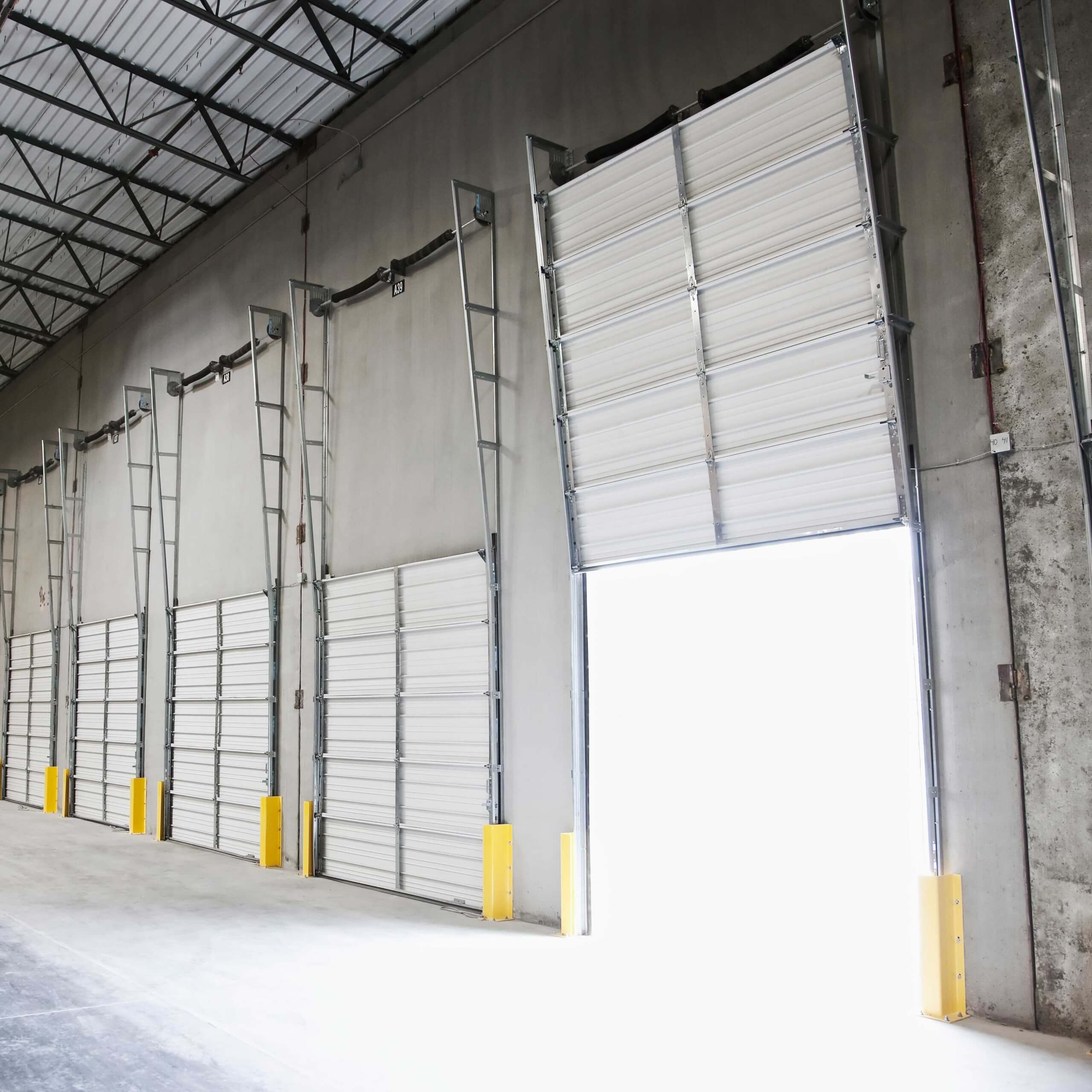Manufacturing Horizon Scanner: April 2025
29th April 2025
“Trump’s tariffs and government action on British Steel may indicate turbulent times, but there’s lots to be optimistic about in the manufacturing sector in 2025. Sustainability, flexibility and innovation are driving change and growth. Our scanner highlights key developments to help your business navigate the manufacturing horizon.“


Manufacturing & Supply Chain
Make UK has published its Executive Survey 2025. It suggests 2025 will be a year defined by the need to adapt, particularly in the face of increasing employment and energy costs; but there’s also cause for optimism. Almost a third of manufacturers are turning to technology to boost productivity and reduce overheads, and almost half plan to expand their product portfolio.
Retail Week has published its Supply Chain 2026 report. It looks at streamlining, innovating and future-proofing supply chains, from first to final mile. In particular, the report features near-shoring, AI-enabled tools, warehouse automation and smarter stock management.
Global management consultant Kearny and the World Economic Forum have published a new report exploring the criteria manufacturers should use to navigate global risk, and to architect their future supply chain network and manufacturing footprint.
The Trump administration is being sued by multiple different US plaintiffs over trade tariffs. At the date of writing, claims have been issued by a civil rights group, a non-profit public-interest litigation firm, several small businesses and the state of California; and a multi-state suit has been issued by Oregon, Arizona, Colorado, Connecticut, Delaware, Illinois, Maine, Minnesota, Nevada, New Mexico, New York and Vermont. The claims challenge Trump’s authority to impose tariffs without Congressional approval. These claims (and others that will likely follow) will be ‘ones to watch’. In the meantime, President Trump has announced a 90-day pause on tariffs imposed on all countries except China, following political and market pressure.
On 22 January 2025, the Packaging and Packaging Waste Regulation was published. The regulation will apply from 12 August 2026. It sets binding re-use targets, restricts certain single-use packaging, and requires economic operators to minimise packaging. It moves away from a linear ‘take-make-dispose’ model, towards a circular economy where packaging is kept in use for as long as possible through reuse and high-quality recycling. Targets include up to 65% recycled content for single-use plastic bottles by 2040. The regulation also mandates labelling to aid consumer sorting, and introduces re-use obligations for businesses.
The Department for Environment, Food and Rural Affairs (Defra) has published guidance on packaging data reporting periods and submission deadlines for large and small organisations under the Extended Producer Responsibility (EPR) for packaging scheme. The guidance outlines that large producers are required to collect and submit data bi-annually, while small producers must do so annually.
In related news, Defra has published a decision tree diagram, illustrating the process for determining the recyclability of materials under the recyclability assessment methodology (part of the EPR for packaging scheme). The resource outlines steps for classifying packaging as red, amber, or green, and can serve as a template for creating custom process diagrams.
Also on packaging, Defra has announced the launch of PackUK, the scheme administrator for the UK’s extended producer responsibility for packaging (pEPR). PackUK will implement the ‘polluter pays’ principle, shifting the cost of managing household packaging waste from taxpayers and local authorities to the businesses that use and supply packaging.
From 31 March 2025, businesses need to implement separate food waste storage and collection processes. This means understanding what wastes are produced and at what frequency, and how these wastes should be stored and collected. See our recent briefing for information and advice.
The Food & Drink Federation has published ‘Powering Communities – UK food and drink manufacturing regional report 2025‘.
Early 2025 has seen a spate of reports from a variety of sector commentators that gum arabic, a vital ingredient used in a wide range of products across the food and drink industry, is increasingly being trafficked from rebel-held areas of war-torn Sudan, complicating Western companies’ efforts to safeguard their supply chains.
Global natural rubber production is expected to fall short of consumption for the fifth consecutive year in 2025. This article from Euronews looks at factors impacting the industry and market.
The Carbon Accounting Programme has developed a standard approach to encourage manufacturing businesses not currently required to measure their emissions to consider measuring them. Download the Carbon Accounting Guide here.
On 26 February 2025 the EU published its Omnibus Simplification Package – a proposal to simplify sustainability due diligence and reporting, including via the Corporate Sustainability Due Diligence Directive (CSDDD) and the Corporate Sustainability Reporting Directive (CSRD). The intention is to simplify administrative burdens, boost competitiveness, and unlock investment capacity. It would delay the coming into force of CSDDD, with the deadline for Member States to transpose CSDDD into national law postponed to 26 July 2027, and the compliance deadline for the first wave of in-scope companies also postponed to 26 July 2028. The date for publication of compliance guidance by the EU Commission would also be brought forward to July 2026, to give businesses more time to prepare. The proposal may also water down CSDDD due diligence measures. Re CSRD, the proposal intends to reduce the number of companies within scope and postpone reporting requirements by 2 years for companies that were due to comply for financial years 2025 and 2026.
The Department for Business and Trade (DBT) has published three guidance documents addressing product marking and the recognition of EU requirements for the GB market. The first details the approach to product marking, including the continued recognition of certain EU requirements for specific sectors; the second covers using harmonised standards for placing CE marked products on the GB market; and the third gives guidance on the recognition of EU requirements.
The EU Ecodesign Regulation will apply from 2026, establishing a framework for ecodesign requirements for sustainable products, with the aim of ensuring that by 2030 a significant proportion of EU products will be durable, energy and resource efficient, repairable and recyclable. Product manufacturers may need to comply with detailed requirements to be established under this Regulation.
New research from FourJaw Manufacturing Analytics shows value added by manufacturing employees in the UK increased by almost $14,000 per worker between 2018 and 2023. These gains were higher than those achieved in any other major manufacturing economy over the same period and elevated the value of per-worker manufacturing output above Germany, South Korea, and Japan.
Initiatives to accelerate bio-based manufacturing in Scotland have received a £5 million funding boost through the Launchpad programme run by the government’s Innovate UK agency. The money will be shared by 19 projects across industrial biotechnology processes, biomass supply chain development, sustainable production, and skills development.

The EU’s Data Act will apply from September 2025. UK businesses could fall within scope if they use, collect or manage data in the EU. Among other things, manufacturers will have to design their products in a way that allows both business and consumer users to take full advantage of the data created while using connected devices.
The Court of Appeal recently ruled that a case brought by migrant workers against Dyson, including allegations of forced labour and dangerous conditions at two Malaysian factories, can be heard in the English courts. Dyson has lodged a permission to appeal application at the Supreme Court. One to watch.
The Joint Committee on Human Rights is conducting an inquiry into forced labour in UK supply chains. It will assess the Modern Slavery Act 2015 and other legislation in relation to preventing goods linked to forced labour from entering the UK market. It intends to learn from international approaches to enhance the UK’s legal and regulatory framework.
On 24 March 2025, the Home Office updated its statutory guidance on transparency in supply chains under section 54 of the Modern Slavery Act 2015 for the first time since it was published in 2015. Under section 54, businesses with an annual turnover of £36 million or more that supply goods or services and conduct business in the UK must publish an annual slavery and human trafficking statement.
Critics have claimed that online retailer Temu’s ultra-low pricing depends on forced labour in its supply chain. On 7 January 2025, Temu’s Senior Legal Counsel and Senior Compliance Manager answered questions before, and gave “some reassurance” to, the UK’s Business and Trade Committee ‘Make Work Pay: Employment Rights Bill’ inquiry in connection with the company’s practices and supplier agreements*. On 18 February 2025, The Conversation published an article on Temu’s Consumer-to-Manufacturer business model, which uses reverse auctions, a consigned inventory model and logistics expertise, which is at the heart of Temu’s pricing strategy and market success.
*In the same oral evidence session, SHEIN’s General Counsel gave “almost zero confidence in the integrity of [SHEIN’s] supply chains” and her reluctance to answer questions “bordered on contempt of the Committee”.
The UK government has published the First Independent International AI Safety Report. It sets out “the first comprehensive, shared scientific understanding of advanced AI systems and their risks”, having had input from 100 world-leading AI experts. It’s anecdotally described as the first global handbook on AI.
The government has also launched the “Blueprint for Digital Government”. The plan identifies key priorities, including: joining up public sector services; harnessing the power of AI; reforming funding of digital and technology; and maximising the value and potential of public procurement of digital and technology. It also begins to expand upon the AI Opportunities Action Plan.
The AI literacy requirement under the EU AI Act started to apply on 2 February. We also saw the first pieces of guidance coming out of Europe, on prohibited AI practices and the definition of AI system under the Act. We’re waiting for guidance on other key aspects, including high-risk AI systems. Our recent webinar on the regulatory requirements under the Act and the AI landscape generally, is now available to view on demand.
We’re seeing an increasing amount of hype about ‘agentic AI’ – one of the top tech trends for 2025. The government’s recently published AI playbook for the public sector describes agentic AI as ‘autonomous AI systems that can make decisions and perform actions with minimal human intervention’. The UK’s AI Opportunities Action Plan refers to these systems, saying that ‘the chatbots we are all familiar with are just an early glimpse as to what is possible’.
Amazon has introduced Alexa+, its next-generation assistant powered by generative AI and with agentic capabilities ‘which will enable Alexa to navigate the internet in a self-directed way to complete tasks on your behalf’.
In February 2025 (shortly after then-chair of the Competition and Markets Authority (CMA) Marcus Bokkerink stepped down amid concerns that the regulator hadn’t been sufficiently ambitious in terms of growth and ex-Amazon Doug Gurr was appointed as interim chair), the DBT published its strategic steer to the CMA. The steer sets out how the government expects the CMA to support and contribute to economic growth. On 10 March 2025, the CMA announced that promoting competition and protecting consumers will remain fundamental. A key aspect of its strategy to support growth will also be to use its enhanced powers under the Digital Markets, Competition and Consumers Act to help grow the economy through promoting consumer confidence and deterring poor corporate practices.
Various car manufacturers, along with the European Automobile Manufacturers’ Association and the Society of Motor Manufacturers & Traders, have been fined a total more than £77m after admitting to breaking competition law in relation to vehicle recycling and advertising claims. Manufacturers are required to include details on recyclability in their advertising material. The CMA found that the manufacturers and trade associations illegally agreed not to compete when advertising what percentage of their cars can be recycled, as well as colluding to avoid paying third parties to recycle scrap cars.
The Ministry of Housing, Communities and Local Government has published the Construction Products Reform Green Paper on wide-ranging plans for future regulation of construction products. Proposals include bringing all construction products within the general product safety regime; enhanced regulatory, surveillance and enforcement powers; development of a new single Construction Products Regulator; and civil and criminal penalties for manufacturers that engage in misleading practices or neglect their responsibilities regarding product safety. The consultation is the first step in what the government says will be a proactive process of engagement and consultation across the system in the medium to longer term. It’s open until 21 May 2025.

Logistics
CBRE has published its UK Logistics Market Summary Q4 2024.
JLL has published its Global Real Estate Perspective February 2025 for the logistics sector.
Barclays Corporate Banking has published a 2025 Outlook for Manufacturing, Transport and Logistics.
The government has announced approval of the Development Consent Order for the Lower Thames Crossing. Logistics UK Chief Executive David Wells OBE says it will drive growth across the whole economy: “Businesses up and down the country are currently hamstrung by delays crossing the Thames… industry is united in its backing for this vital trade route. When completed, it will unlock UK logistics, drive growth and help keep supply chains moving across the whole country.”
On 26 February 2025, the senior leaders of 30 major UK businesses wrote to Business and Trade Secretary Jonathan Reynolds, urging him to acknowledge the critical role that effective supply chains play in all parts of the economy, and asking for the logistics sector represented on the Industrial Strategy Council.
In a submission to the Treasury on 10 February 2025, the UK Warehousing Association called for the Generation Logistics programme to be extended and for the Freight Innovation Fund to be included in the Government’s long term spending plans. This article from The Chartered Institute of Logistics and Transport analyses the impact of the Generation Logistics initiative over the last year.
“The skills shortage is one of the biggest challenges currently facing the logistics sector. Our dedicated Logistics lawyers and Technology & Digital specialists are helping logistics clients to implement and operate innovations such as automation, AI and robotics, both to streamline warehousing and supply chain management from a commercial perspective, and to counter reduced headcount.“

The Department for Transport (DfT) is developing a strategy which will set the direction for how transport should be designed, built and operated in England over the next 10 years. In a submission to the DfT dated 20 February 2025 (available to Logistics UK members), Logistics UK called on the government to produce a co-created logistics roadmap to net zero that includes measures to maximise the use of low carbon fuels across all logistics modes, and for the modernisation of logistics vehicle regulations, from road to drones, to enable the movement of goods in the most productive, strategic and green way. The submission also requests support for city regions to deliver efficient urban logistics to drive growth, opportunity, decarbonisation and innovation, and urges the DfT to provide local and combined authorities with a clear national framework.
The Competition and Markets Authority (CMA) is investigating the acquisition by GXO Logistics, Inc. of Wincanton Plc. It’s initial findings (19 February 2025) are that there are competition concerns. The parties have responded to the CMA’s initial findings, and the statutory deadline for the CMA’s decision under this investigation is 25 June 2025.
The government has published a summary of responses to the draft climate change adaptation strategy issued by the DfT.
On 25 March, the DfT launched its new maritime decarbonisation strategy. The strategy includes the UK emissions trading scheme being extended to maritime and prioritises fuels of the future and shore power. To support this, DfT has published two supplementary calls for evidence: Net zero ports: challenges and opportunities call for evidence and Decarbonising smaller vessels call for evidence.
A key tenet of the UK government’s growth and net zero strategies is the drive towards a circular economy. We’ve previously reported that the Circular Economy Taskforce published its Terms of Reference and confirmed that a circular economy strategy, underpinned by a series of roadmaps for reform in different sectors and their supply chains, will be forthcoming by autumn 2025. As of 27 March, the government has confirmed that the Taskforce will focus, as a priority, on the following 5 sectors: textiles, transport, construction, agri-food and chemicals & plastics.
The government is considering responses to its consultation on the transition to zero emissions vehicles (ZEVs), and the commitment to end the sale of new cars powered solely by internal combustion engines (ICE) by 2030. The consultation focused on phasing out petrol and diesel vehicles and refining the ZEV Mandate. One to watch.
The European Commission has published its Industrial Action Plan for the European Automotive Sector, which outlines measures to strengthen competition and accelerate the transition to zero-emission mobility in the European automotive industry. One area of focus is accelerating the uptake of ZEVs in corporate fleets. The Plan describes eliminating subsidies for fossil fuelled vehicles as “instrumental” to that aim.
The Zemo Partnership has published a report on accelerating the decarbonisation of commercial vehicles in Wales.
Sky News has reported Amazon’s plans to trial drone deliveries in the UK. Prime Air, is already operating in two locations in the US, but Amazon has confirmed it’s submitting a planning application to build drone flight operations at its fulfilment centre on the outskirts of Darlington, and is seeking clearance from the Civil Aviation Authority for drone flights.
“Take-up of commercial opportunities afforded by drone innovation is increasing. Drone law and regulation is developing to keep pace. In this article, we highlight some of the key drone laws and legal issues (including GDPR/data protection) impacting drone operators in the UK today.”

The BBC has reported that a new type of asphalt, designed with AI and made from biomass waste, can mend its own cracks without the need for maintenance or human intervention. Scientists believe it could be a solution to both achieving net zero and the UK’s pothole crisis.
90% of the sustainable aviation fuel (SAF) used by British planes last year came from used cooking oil imported from China, official figures show. However, supply is expected to dry up, with China due to impose a mandate later this year on how much SAF its airlines must use.
A judicial review challenge of the government’s Jet Zero strategy has opened at the High Court. Climate campaigners Possible and Group for Action on Leeds Bradford Airport argue the strategy relies ‘too heavily on unproven technologies and carbon offsetting’.
Electro-methanol is produced by combining green hydrogen with captured carbon dioxide. It has a closed carbon cycle, only emitting the CO2 it captures during production. Hellenic Shipping News has reported (18 March 2025) that its poised to become a game-changer for decarbonising the shipping industry.
The government is consulting on significantly reforming the railway system, including plans to establish Great British Railways.
The Foreign, Commonwealth & Development Office confirmed, on 14 March, that the EU plans to introduce the Entry/Exit System in October 2025 (the specific start date is yet to be confirmed).
Import Control System 2 (ICS2), the new safety and security information system for movements into Northern Ireland and the European Union, has been live since 1 April 2025 for rail and road carriers. ICS2 requirements will become fully mandatory from 1 September 2025. Before sending goods, carriers need to know which Entry Summary Declaration (ENS) data must be reported, and ensure sufficient, complete data is submitted. Operators not yet connected must begin necessary IT development, complete mandatory self-conformance testing and connect to ICS2. For more information, see here and here.
Campaign group ‘Fighting Dirty’ has initiated legal proceedings against the UK government (Environment Agency) after an investigation found that millions of waste tyres being exported for recycling are in fact being burned in furnaces. In response, the EA has said it will conduct a review of its approach to waste tyre shipments.
UK Haulier has published an article on the importance of AI-driven manufacturing security systems in the road haulage industry.
The data centre sector presents significant opportunities and is a key focus of growth for many investors, developers, contractors, energy operators, landowners and government. Delivering and operating data centres involves a range of challenges in respect of infrastructure, energy and construction, as well as commercial, technical and operational matters. Principal among these, and considered here in more detail, are challenges associated with securing access and connection to utilities, necessary consents and the environmental impact of the power and water required to run a data centre.
“As demand for digital infrastructure accelerates, data centres are becoming critical assets – but delivering and operating them successfully requires navigating a complex landscape of planning, energy, construction, ESG and technical challenges. Success depends on strategic coordination across a variety of legal and commercial disciplines and a sector focussed approach is required to turn these challenges into opportunities for long-term sustainable growth.”

On 24 February 2025, the Ministry of Housing, Communities and Local Government (MHCLG) updated the planning practice guidance to reflect the changes made to the NPPF published in December 2024.
On 27 February, the government published its response to its consultation on the proposed reforms to the National Planning Policy Framework and other changes to the planning system.
The Planning and Infrastructure Bill has been introduced in Parliament. It aims to streamline planning and speed up building. See this guidance. Key planning points include:
- Sub-delegation of setting of planning fees to LPAs. Requirement that fees mustn’t exceed cost to LPA of determining that planning application and fees must be retained for the LPA’s relevant planning function
- New scheme setting out which planning functions should go to planning officers and which to committee, and requiring committee members to take mandatory training
- Roll-out of Spatial Development Strategy
- Establishment of Nature Restoration Fund and Environmental Delivery Plans – a more strategic approach to discharge of environmental obligations on development
- Expanded, updated, more flexible use of development corporations
- Compulsory Purchase Order reform, including removal of hope value.
The government has announced it will consult on new plans to narrow the scope of statutory consultees in the planning process, and make the heads of “key” consultees report on their performance directly to the Treasury. Reform would:
- review the scope of all statutory consultees “to reduce the type and number of applications on which they must be consulted”. For example, organisations such as Sport England, Theatres Trust and The Gardens Trust will no longer be required to input on planning decisions, and the scope of other statutory consultees will be narrowed to focus on heritage, safety and environmental protection;
- clarify that local authorities should only be consulting statutory consultees “where necessary”; and
- require that decisions “should not be delayed beyond the 21 day statutory deadline unless a decision cannot otherwise be reached or advice may enable an approval rather than a refusal”.
The high profile DHL Towcester warehouse planning inquiry has heard closing submissions and a decision is awaited. One to watch.
The government has published the National Biodiversity Strategy and Action Plan for 2030. It outlines the government’s commitment to halting and reversing biodiversity loss; sets 23 targets aligned with the Global Biodiversity Framework; details actions and strategies for each UK country and the UK Overseas Territories; and establishes mechanisms for tracking progress and updating.
A year after the initial implementation of biodiversity net gain, Carter Jonas has published research, Biodiversity Net Gain: Navigating the Evolving Market, exploring the impact of the change in the law on landowners, land managers, developers, local authorities and environmental organisations.
The government has announced plans to make “common sense changes” to the Habitats Regulations and the Wildlife and Countryside Act to support the commitment to build 1.5 million homes and advance major infrastructure projects.
The Department for Environment, Food & Rural Affairs and the MHCLG have published a new Planning Reform Working Paper, which proposes a new approach for how “housing and infrastructure development can meet environmental obligations and contribute to nature recovery”. The Paper includes wide-ranging proposed reforms, including in relation to environmental mitigation and nutrient neutrality rules. For example, developers would no longer need to pay for individual site assessments if the impacted environmental features are covered by ‘Delivery Plans’, which are set to be underpinned by a new ‘Nature Restoration Fund’, to which developers could make a one-off payment.
In related news, the district court of The Hague has ruled in favour of Greenpeace Netherlands in its a case against the Dutch government for failing to cut nitrogen pollution. According to ENDS (4 March 2025), the National Federation of Builders believes the case demonstrates that the UK government’s approach to nitrate mitigation is ‘flawed’ and leaves it open to the possibility of similar legal action. (Although a European case, the decision could have a significant impact on UK development – it was the 2018 Dutch nitrogen case which prompted Natural England’s nutrient neutrality advice to local authorities and the subsequent logjam in development ever since.) Nutrient neutrality’s definitely one to watch.










“One of the most pressing sustainability challenges for the food manufacturing sector is food waste. With the overall cost of food waste for UK businesses an estimated at £5 billion per year, the food industry is rising to the occasion, implementing innovative strategies to reduce waste and promote sustainability.”
Richard Naish, Partner, Corporate